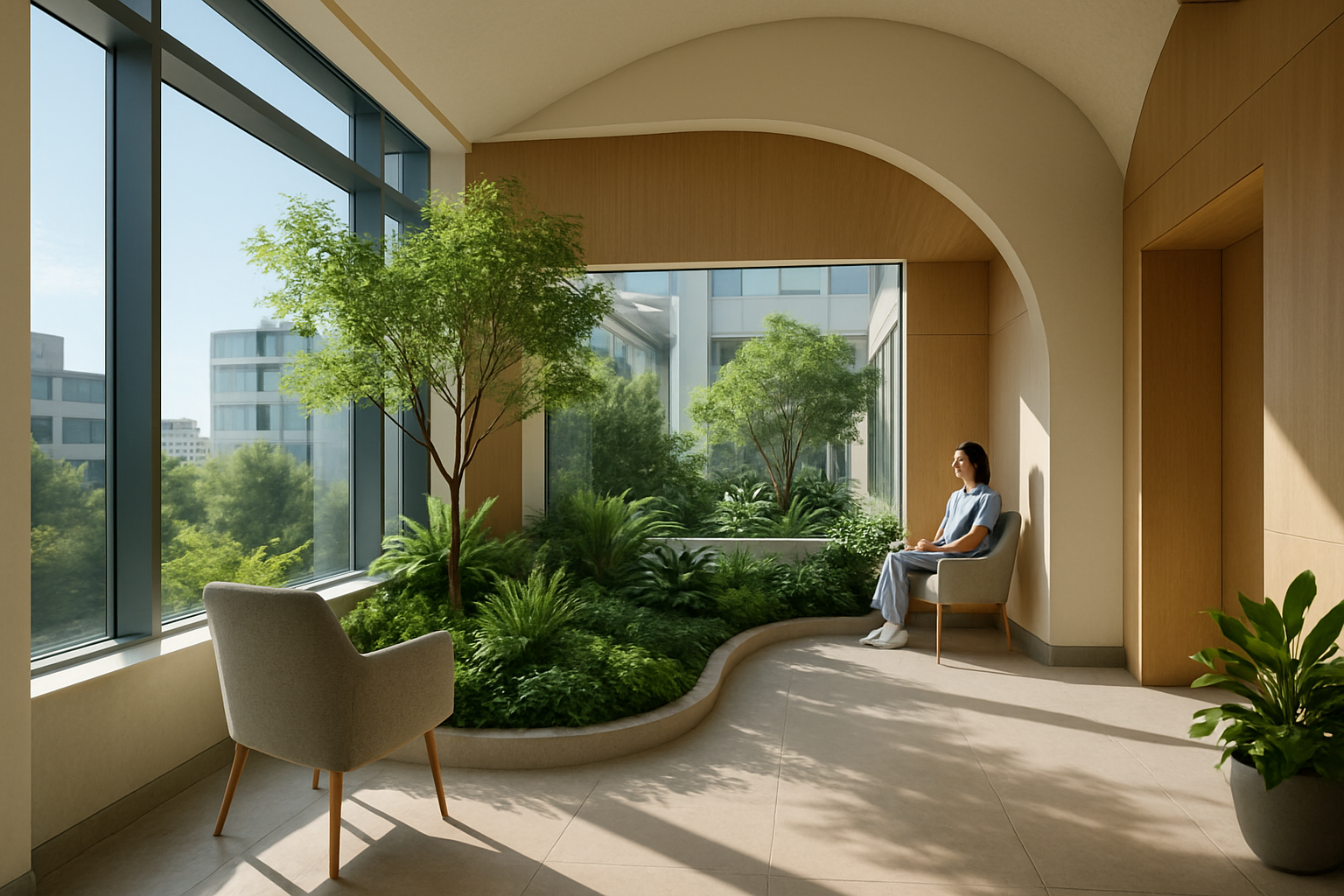Biophilic Design: Integrating Nature for Optimal Health and Productivity
In an era where urbanization and technology dominate our daily lives, a revolutionary approach to wellness is gaining traction. Biophilic design, the integration of natural elements into our built environments, promises to transform our living and working spaces into havens of health and productivity. But how exactly does bringing nature indoors impact our well-being, and can it truly make a difference in our increasingly digital world?

The Science Behind Biophilic Design
The concept of biophilia was first introduced by psychoanalyst Erich Fromm in the 1970s and later popularized by biologist Edward O. Wilson. Their work laid the foundation for understanding how our connection to nature impacts our well-being. Research in environmental psychology and neuroscience has since provided compelling evidence for the benefits of biophilic design.
Studies have shown that exposure to natural elements can reduce stress, lower blood pressure, and improve cognitive function. For instance, a study published in the Journal of Experimental Psychology found that the presence of plants in an office space increased productivity by 15% and improved participants’ concentration and air quality satisfaction.
Key Elements of Biophilic Design
Biophilic design incorporates various natural elements and patterns into built environments. These include:
-
Direct nature: Living plants, water features, and natural light
-
Indirect nature: Images of nature, natural materials, and textures
-
Space and place: Designs that mimic natural environments
-
Natural patterns and processes: Fractals, biomimicry, and sensory variability
Implementing these elements can be as simple as adding a living wall to an office space or as complex as designing entire buildings around natural light and ventilation systems.
Health Benefits of Biophilic Spaces
The integration of nature into our built environments offers numerous health benefits:
-
Stress reduction: Exposure to natural elements has been shown to lower cortisol levels and promote relaxation.
-
Improved air quality: Plants act as natural air purifiers, removing toxins and increasing oxygen levels.
-
Enhanced cognitive function: Natural environments have been linked to improved focus, creativity, and problem-solving abilities.
-
Better sleep: Exposure to natural light helps regulate our circadian rhythms, leading to improved sleep quality.
-
Increased physical activity: Biophilic designs often encourage movement and exploration, promoting physical health.
Biophilic Design in the Workplace
As companies increasingly recognize the importance of employee well-being, biophilic design is finding its way into office spaces worldwide. Tech giants like Amazon and Google have incorporated extensive biophilic elements into their headquarters, creating workspaces that blur the line between indoors and outdoors.
The impact of these designs on employee health and productivity is significant. A study by Human Spaces found that employees working in environments with natural elements reported a 15% higher level of well-being, a 6% increase in productivity, and a 15% increase in creativity compared to those in environments without nature.
Biophilic Design at Home
The principles of biophilic design can also be applied to residential spaces, creating homes that promote health and well-being. Simple changes like maximizing natural light, incorporating indoor plants, and using natural materials can transform a living space into a restorative environment.
Research has shown that homes with biophilic elements can improve sleep quality, reduce anxiety, and enhance overall life satisfaction. A study published in the International Journal of Environmental Research and Public Health found that residents of homes with more natural elements reported higher levels of happiness and lower levels of depression.
Challenges and Future Directions
While the benefits of biophilic design are clear, implementing these principles on a large scale presents challenges. Cost considerations, maintenance requirements, and the need for interdisciplinary collaboration between architects, designers, and health professionals are some of the hurdles that need to be addressed.
However, as awareness of the importance of our connection to nature grows, so does the demand for biophilic spaces. Future developments in sustainable architecture and advances in technology, such as smart systems that mimic natural processes, promise to make biophilic design more accessible and effective.
The Role of Biophilic Design in Public Health
As urban populations continue to grow, the importance of integrating nature into our cities becomes increasingly apparent. Biophilic design has the potential to play a crucial role in public health strategies, addressing issues such as air pollution, urban heat islands, and the mental health challenges associated with city living.
Cities like Singapore have already embraced this concept, integrating extensive green spaces and vertical gardens into their urban planning. These initiatives not only improve the aesthetic appeal of the city but also contribute to better air quality, biodiversity, and overall public health.
Bringing Nature Indoors: Practical Tips
-
Maximize natural light by keeping windows unobstructed and using light-reflecting surfaces
-
Incorporate a variety of indoor plants, focusing on species that thrive in indoor environments
-
Use natural materials like wood and stone in furniture and decor
-
Install a small indoor water feature to introduce the calming sound of flowing water
-
Choose artwork depicting natural scenes or landscapes
-
Incorporate organic shapes and patterns in design elements
-
Create a dedicated green space or indoor garden, even in small areas
In conclusion, biophilic design represents a powerful tool in our quest for healthier, more productive living and working environments. By reconnecting with nature in our built spaces, we can harness the innate benefits of the natural world to enhance our physical and mental well-being. As research continues to unveil the profound impact of our surroundings on our health, the integration of biophilic principles into architecture and design is not just a trend, but a necessary evolution in how we conceive and create the spaces we inhabit.






